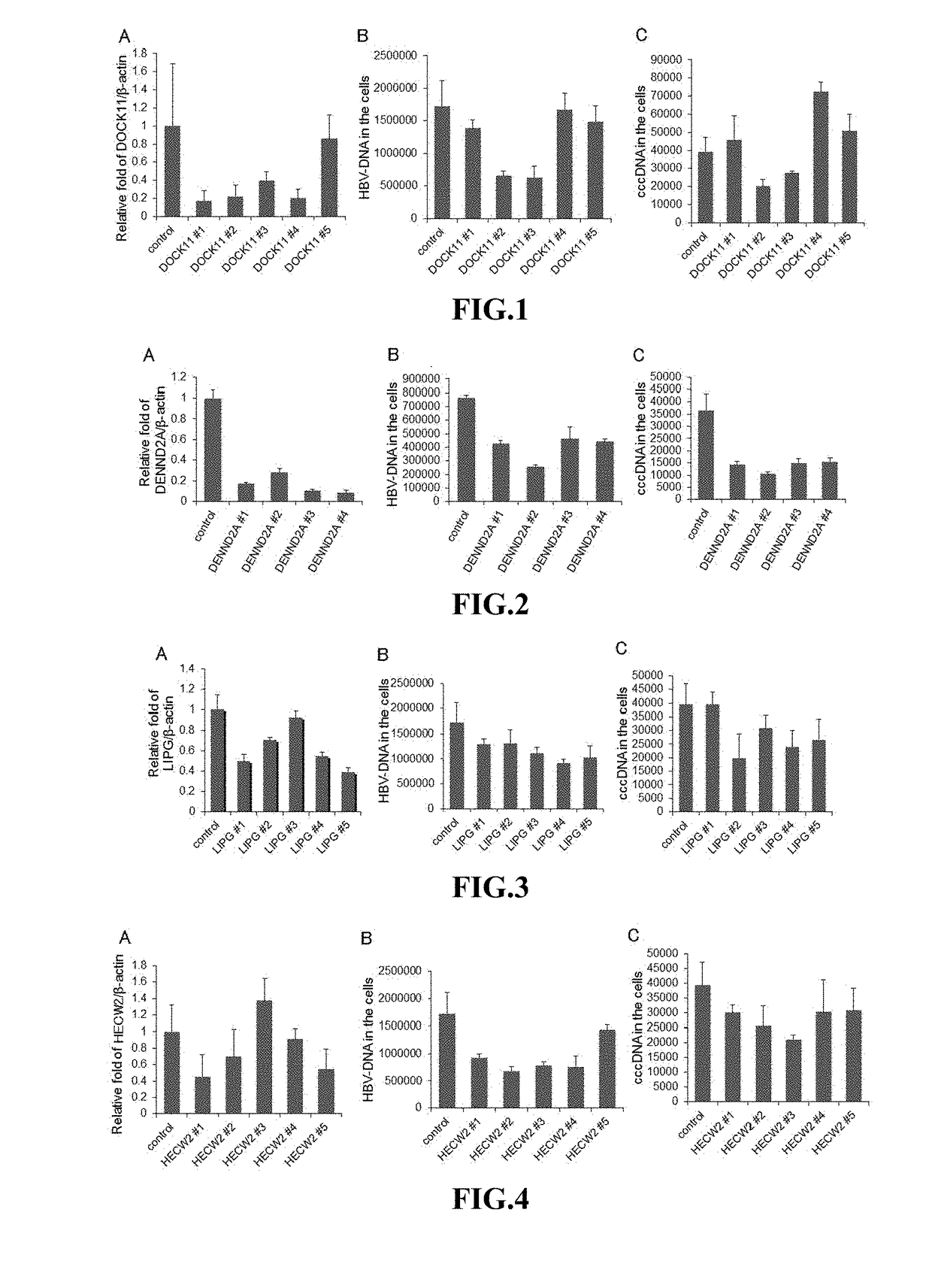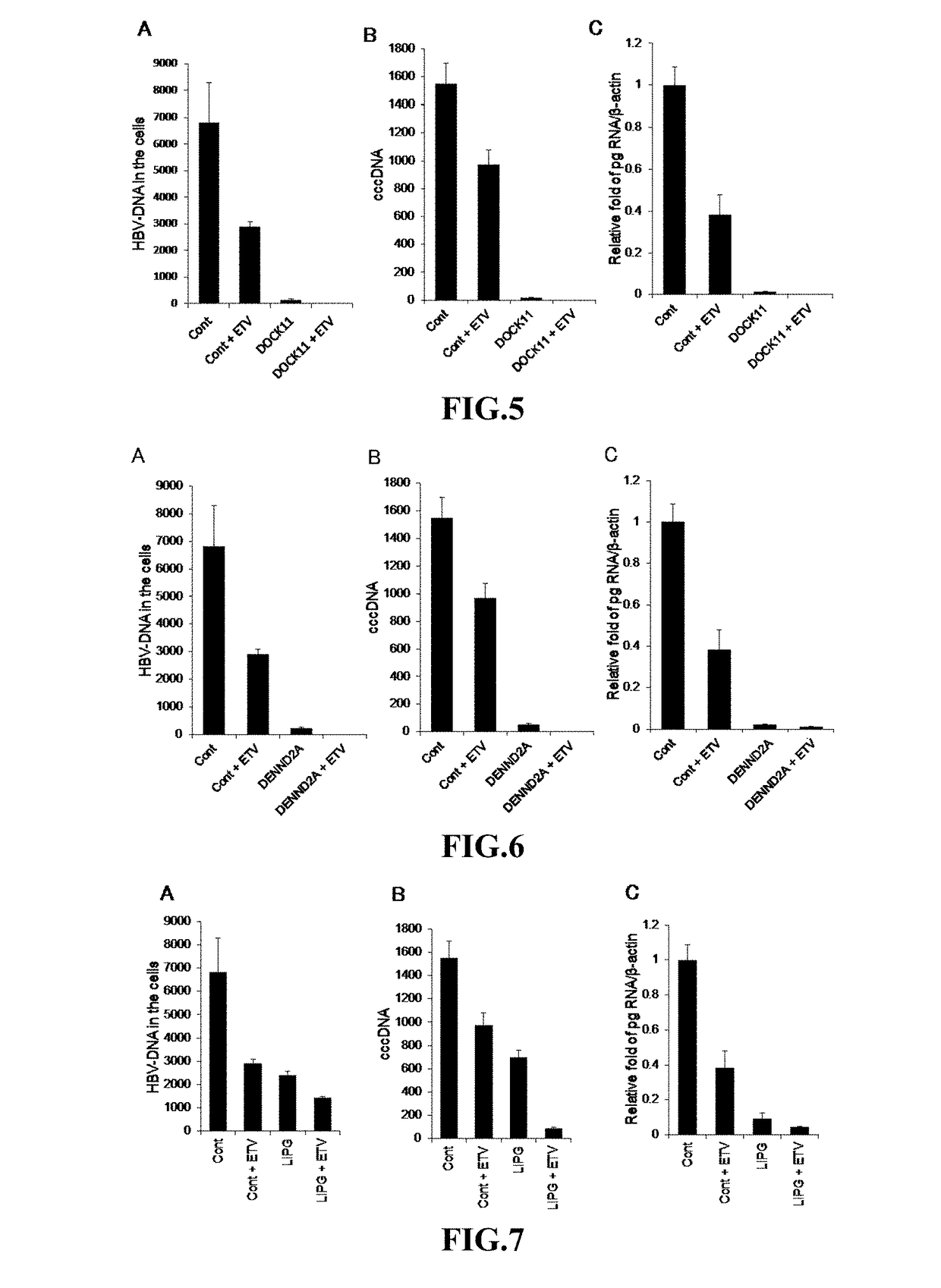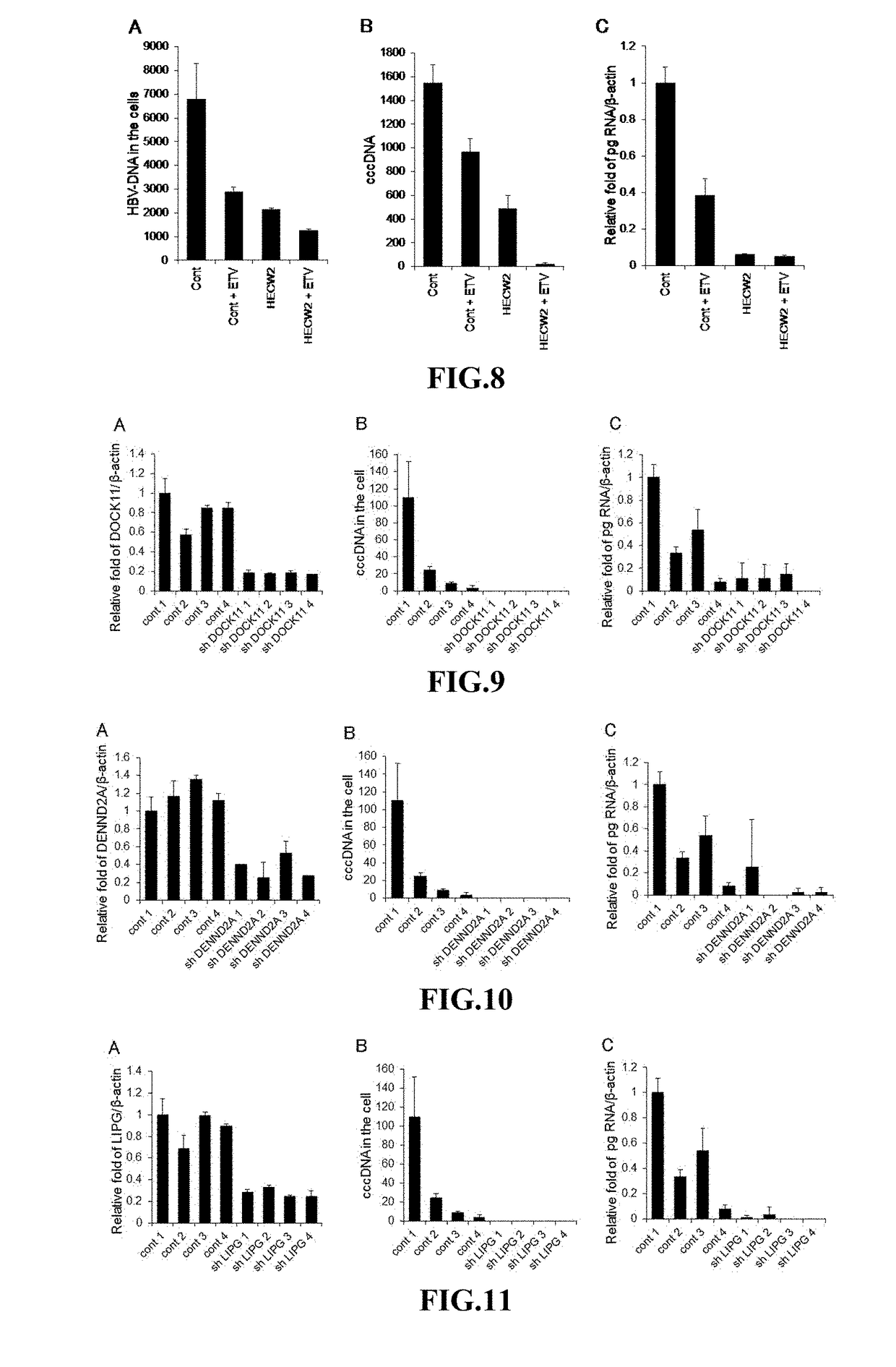Antiviral drugs
a technology of antiviral drugs and antiviral antibodies, applied in the field of new antiviral drugs, can solve the problems of increased severity, said that such vaccines and drugs do not produce sufficient effects, and cannot be developed, so as to prevent the reactivation of hbv, reduce the amount of hbv cccdna, and remove i
- Summary
- Abstract
- Description
- Claims
- Application Information
AI Technical Summary
Benefits of technology
Problems solved by technology
Method used
Image
Examples
reference example 1
(Reference Example 1) Preparation of Polydimethylsiloxane (PDMS) Slide for Comprehensive Single-Cell Gene Expression Analysis
[0132]According to the method described in the International Publication WO2015 / 166768, a PDMS slide for comprehensive single-cell gene expression analysis was prepared. First, emulsion PCR was carried out using a barcode linker to prepare beads to which PCR amplification products were bound, and then the beads were purified. The obtained beads were treated with restriction enzymes, alkali and heat shock, to prepare beads to the surface of which several millions of oligonucleotide molecules consisting of single-stranded DNAs were bound. Different barcode sequences were given to the individual beads, respectively. The sequence of the barcode linkers is as follows, which is shown in SEQ ID NO: 20.
Barcode linkers (SEQ ID NO: 20):5′-CCATCTCATCCCTGCGTGTCTCCGACTCAGGCAGTGAAAAAAAAAAAAAAAAAAAAAAAAANNNNNNNNNNNNACATAGGCCGTCTTCAGCCGCTGAGACTGCCAAGGCACACAGGGGATAGG-3′N = A o...
example 5
(Example 5) Determination of Action of Target Gene by Genome Editing
[0156]In HepG2.2.15 cells, which had been established by transfecting HepG2 human hepatoma cells with HBV, the DENND2A and Dock11 genes were knocked down using CRISPR / Cas 9 system. The amounts of HBV DNA, HBV cccDNA, and pg RNA in the HepG2.2.15 cells in which the target genes were knocked down were determined in the same manner as in Example 1.
[0157]The results are shown in FIG. 14. It was confirmed that knockdown of Dock11 gene decreased the amount of HBV cccDNA in HepG2.2.15 cells to about 5% of the control compared. It was thus demonstrated that the Dock11 gene plays an important role in retaining cccDNA of HBV in host cells.
(Example 6) Determination of shRNA Function Against HBV Infection 3
[0158]The effects of an shRNA on the proliferation of HBV when PHHs were infected with HBV and then treated with an shRNA were investigated. One week after PHHs were infected with HBV, the shRNA (SEQ ID NO: 2) against Dock11 ...
example 10
(Example 10) Determination of Effect of LIPG Inhibitor on HBV
[0165]An HBV expression construct (HBV-C: provided by Dr. Yasuhito Tanaka at Nagoya City University) was introduced into Huh7 cell line. Five days after the introduction, an LIPG inhibitor (GSK264220A) was added at 1 μM to 100 μM and the cells were cultured. One week after the addition of the LIPG inhibitor, the amounts of HBV DNA and HBV cccDNA were determined in the same manner as in Examples 1 and 2.
[0166]The results are shown in FIG. 20. It was confirmed that, depending on the concentration of the LIPG inhibitor, the amounts of HBV DNA and HBV cccDNA were decreased and HBV infection was inhibited.
(Example 11) Determination of shRNA Function Against Cdc42 Gene
[0167]Five shRNAs were prepared against Cdc42 gene, which is a gene encoding Cdc42 known to interact with DOCK11 although no difference was observed in its expression level for HBV gene retention, and investigated for their antiviral actions against hepatitis B vir...
PUM
| Property | Measurement | Unit |
|---|---|---|
| weight | aaaaa | aaaaa |
| weight | aaaaa | aaaaa |
| volume | aaaaa | aaaaa |
Abstract
Description
Claims
Application Information
 Login to View More
Login to View More - R&D
- Intellectual Property
- Life Sciences
- Materials
- Tech Scout
- Unparalleled Data Quality
- Higher Quality Content
- 60% Fewer Hallucinations
Browse by: Latest US Patents, China's latest patents, Technical Efficacy Thesaurus, Application Domain, Technology Topic, Popular Technical Reports.
© 2025 PatSnap. All rights reserved.Legal|Privacy policy|Modern Slavery Act Transparency Statement|Sitemap|About US| Contact US: help@patsnap.com



